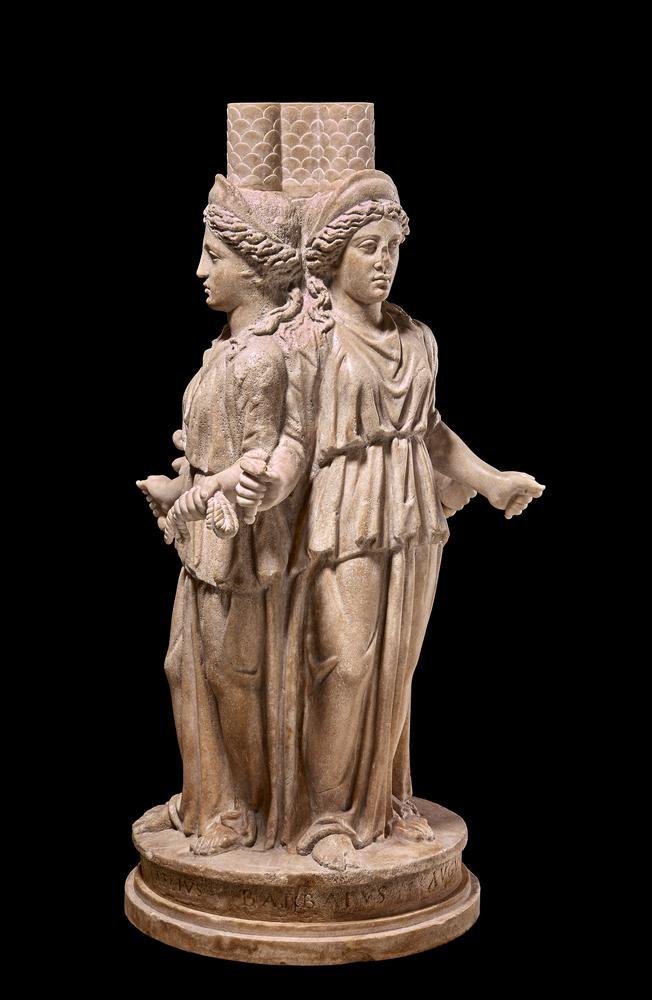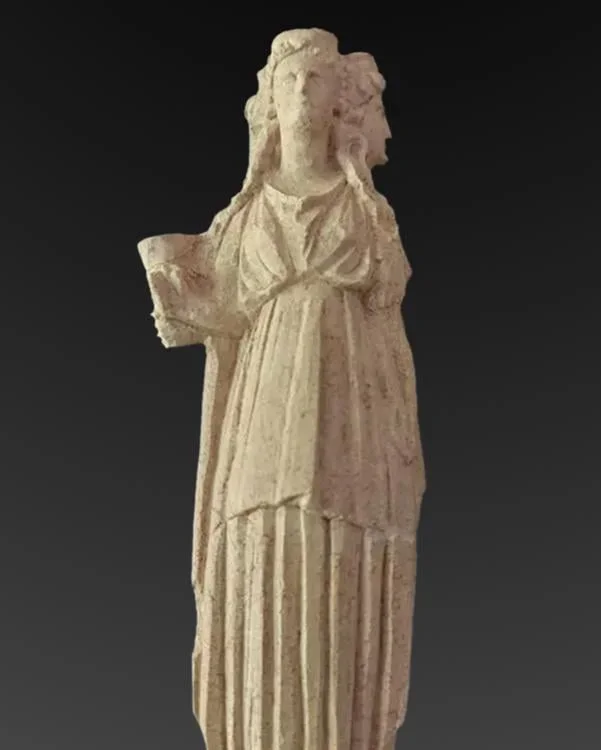The Goddess’s Sacred Day: Hekate’s Deipnon
Hekate: The Goddess of Crossroads, Torches, and More
Hekate in modern-day society has become synonymous with magic and even witchcraft, but for those who know, she wasn’t viewed that way in the ancient world. She was a goddess of the crossroads, a goddess of torches, with associations to necromancy. She was a protector and a guide to the queen of the Underworld and to the restless dead under her command. As one who led the restless dead through towns, many sought to appease her so that their home and all within would be protected by the restless shades.
More often than not, those looking to revive history or worship the Greek gods ask us, “How did the ancients honor Hekate?” While day-to-day veneration is hard to see in the archaeological and historical record, what we can say is that in some areas of the Eastern Mediterranean world, those who wanted protection from the restless dead left offerings to her on the darkest night (new moon). This is what is known as Deipnon.
Ancient Celebrations: Deipnon
If Persephone and Demeter have the Eleusinian Mysteries, what does Hekate have? Deipnon! But what was Deipnon?
Deipnon literally translates to “supper,” and the sacred day took place on the dark moon (new moon). During this time, it was believed that the goddess would lead the restless dead through towns, villages, etc. So, many would have left offerings to her at their thresholds or crossroads to appease the goddess and ask for protection from the restless dead. This may have been done each month, as compared to the twice-a-year celebrations of Eleusis.
It is through ancient sources and evidence that we can begin to piece together what took place and, should you desire, bring it into modern day.
How do you celebrate the OG girl dinner?
Terracotta bell-krater, attributed to the Persephone Painter; ca. 440 BCE. Image courtesy of the Metropolitan Museum of Art, New York.
Lighting candles is one of the easiest modernizations that directly draws from ancient history. While lamps would have been used, candles offer a perfect modernization!
Our Deipnon candle was inspired by one of her most renowned sites in modern-day Türkiye; Lagina. The columns on the label stand again at the site, reminding us that connections to the past can still be made. It is topped with cake molds. Why? Writings tell us that ancient peoples left small offerings, such as cakes, bread, fish, and more, for the goddess when asking for protection.
A reminder, this is specific to the goddess Hekate. While ancient peoples worshipped different gods and goddesses in their pantheons, Deipnon, especially at the site of Lagina, is specifically associated with Hekate. To take her out or even to input any other Greek gods or goddesses for this day would be akin to removing the history, language, society, and cultural frameworks that not only created her but also shaped her as well.
With modernization, historicity and accessibility are key! You may even be asking, “Did the ancients leave candles to her?” A great question. We know that lamps, incense, and offerings were lit to honor these gods, but specific evidence of wax, especially beeswax, in the archaeological record is scarce. Why? Many times, it just doesn’t survive!
Appeasing the Goddess: Offerings
Statuette of Hekate found in Kelenderis back in 2023.
Since Deipnon was about appeasing Hekate and the restless dead, what would quell them? The answer is simple foodstuffs. No massive temple needed to be built in her honor to appease her; rather, it was more personal.
Evidence of offerings includes items such as bread, cheese, or cakes, accompanied by candles, or sometimes discarded items from society, including trash and pollution (Herring 2022). However, offerings could also include libations. These would have been poured into a pit or directly into the earth, as she is a ‘chthonic’ goddess. Simply meaning, she is a goddess of the Earth or below it. In this case, the Underworld.
While we have evidence of different types of offerings listed above, it is worth noting that these offerings, whether libations or small cakes, were personal. Not in the sense that the ancient peoples could leave anything they wanted, but personal in the sense of not being part of the state religion.
While she was widely worshipped at Lagina, Deipnon offerings seem individualistic as compared to the community gatherings of festivals at the temple here.
Deipnon Today: Girl Dinner
Temple of Hektae at Lagina. Image from Büyüközer 2018.
Archaeological remains, textual analysis, and more enable Hekate’s Deipnon to be celebrated as a sacred day or as a ritual! How is it a ritual, you may wonder? A ritual is simply a series of actions (that may have ties to the sacred or to religion) that is always performed in the same order and manner daily, monthly, yearly, etc. Don’t let online misinformation steer you wrong. Rituals can be something like Deipnon here, the bi-yearly Eleusinian mysteries, or even your own skin care that you do daily!
The hardest part of bringing the ancient world into the modern day is not only finding reliable textual evidence to pair with archaeological evidence, but also getting started. Yes, starting can feel like a herculean task before you, especially if you are new to learning about ancient Greek history, ancient Greek religion, or even worshipping the Greek gods. Here at Styx and Bones, we make information about the gods and the ancient world accessible, but we are also here to provide you with tips for starting this research or practice. Everything here is based on history and fact. The best tip we can offer to help alleviate any anxiety you may have about celebrating this sacred day is to base it on historical fact, supported by archaeological and textual evidence. With all that, you cannot go wrong!
And honestly, how cool is it that you can now celebrate a sacred day just like someone did thousands of years ago!
Modernize Deipnon with Our Curated Box!
Here at Styx and Bones, we love bringing ancient practices into the modern world. To keep traditions alive, we have crafted the Deipnon box for those who love ancient Greek Religion and Hekate as much as we do!
This box is great for those who are looking to celebrate her sacred day during the darkest lunar cycle. The items inside are meant to appease the goddess and queen of the restless dead during this time and to ask for her protection.
This box is a modernized way to celebrate Hekate’s Deipnon and can be used in your worship and practice to celebrate this goddess like the ancients.
Each element of our box has ties to the ancient world and features beautiful artwork of her temple at Lagina and correct statues of the goddess herself.
Enter the Mysteries: Heculte
We have discussed Hekate on the Styx and Bones podcast so much that we feel like we have created our own group of cultic followers in modern times, hence Heculte!
And, if you’re loving this content and want to dig deeper into the gods, their real history, and how we actually know what we know, then the Styx and Bones Mystery Cult Patreon & Youtube Membership is where you belong.
Our mission is to make ancient Greek religion, mythology, and history of the ancient peoples accessible, accurate, and genuinely exciting. We’re here to bust myths, challenge mainstream takes, and give you the tools to understand the gods on a deeper level, without needing a degree in classics.
Come hang out with all your Greek mythology-loving, Greek god worshipping friends in the Mystery cult!
From us to you, we hope this helps you in your worship and understanding of this sacred day. Happy Deipnon!
🔗 Click here to join the Mystery Cult on Patreon or join here for our YouTube community and take your knowledge and understanding of the gods to the next level.






